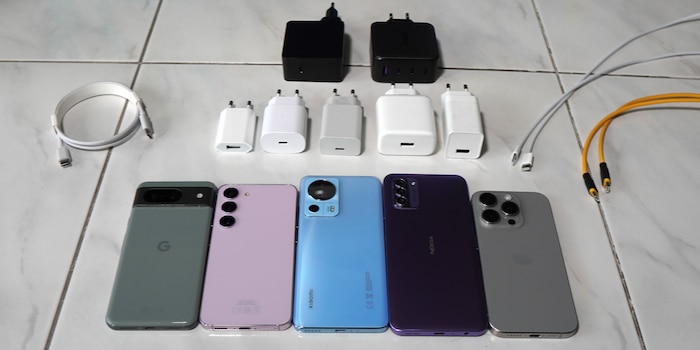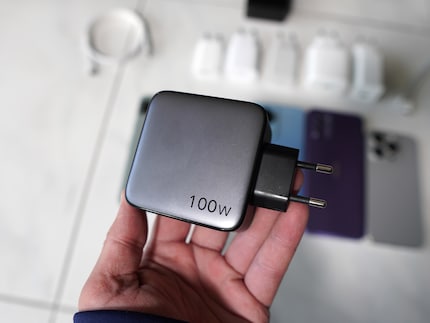
Guide
Sieben Bestseller im Vergleich: Welche ist die beste Powerbank?
by Lorenz Keller

Electricity is electricity, right? Sadly not! Smartphone charging technology is a total mess. Unfortunately, every manufacturer has their own version – to the detriment of all of us.
If you filter the smartphones section in our store by charging technology, you can choose between 20 different fast charging methods, from Adaptive Fast Charge to Warp Charge 65T.
Each manufacturer also has its own maximum charging speeds: Samsung 25 watts, Apple 27 watts, Google 30 watts, Xiaomi 120 watts, Honor 90 watts, Motorola 125 watts, Oppo 80 watts, Huawei 88 watts and so on. It’s impossible to keep up!
What many people don’t know is that if you want to charge quickly with 80, 100 or even more watts, you can usually only do this with the charger and charging cable from the manufacturer itself. For example, if you buy a 100-watt charger from a third-party manufacturer, it may well be that your Honor, Huawei or Xiaomi is only charged with 15 to 20 watts. Not even an iPhone, Samsung or Google always reaches full speed.
This was also evident in my large power bank comparison. The theoretically possible speeds are often far higher than the actual values.
This is mainly because almost every manufacturer is on an ego trip – with a proprietary charging standard that no one else supports. Phones provide much poorer charging performance with third-party chargers, power banks or power sources.
There are definitely reasons for that. If phone manufacturers don’t carefully control the charging process, the battery could overheat or be otherwise damaged. Incorrect charging can also shorten the lifespan of a battery.

We can see how complicated the whole thing is using the example of the Xiaomi 13 Pro, which supports Power Delivery 3.0, Quick Charge 4 and its own Fast Charge standard. This means charging with 36, 100 or 120 watts.
You can only achieve 120 watts with a Xiaomi charger and cable. Otherwise, it all depends on which standard the charger supports and whether the cable is designed for higher voltages and currents. For the average user, this is just complicated and annoying.
Wireless charging manufacturers prove that there’s another way. Almost all manufacturers have agreed on the new Qi2 standard; even Apple is on board and has provided a significant amount of groundwork for it. The alliance is so broad that, in the medium term, hardly any manufacturer can afford not to support Qi2.
So, why doesn’t this work when charging via cable? The differences between the manufacturers are simply too big. Big players like Apple, Samsung and Google don’t attach much importance to the issue of fast charging and have made little progress in recent years. Other manufacturers such as OnePlus, Xiaomi and Honor see this area as an opportunity to stand out. They boast charging speeds of 100 watts and more – up to five times more than the competition.
The manufacturers won’t voluntarily agree on a common strategy. So, we have to force them. Either we as consumers need to discuss the topic publicly and support any efforts for a uniform standard, or institutions like the EU need to put pressure on them. It definitely helped when it came to USB-C.
It’s not necessarily a matter of every smartphone charging at the same speed. It’s about ensuring that you can be sure that your phone will charge as quickly as possible and won’t be slowed down because of incompatible standards.
A uniform standard would be very desirable. As a buyer, you’d then immediately know which chargers, power banks, cables and devices are guaranteed to work together.
How do you charge your smartphone? Does the standards chaos bother you? Let me know in the comments.
Header image: Lorenz Keller
Gadgets are my passion - whether you need them for the home office, for the household, for sport and pleasure or for the smart home. Or, of course, for the big hobby next to the family, namely fishing.
This is a subjective opinion of the editorial team. It doesn't necessarily reflect the position of the company.
Show all